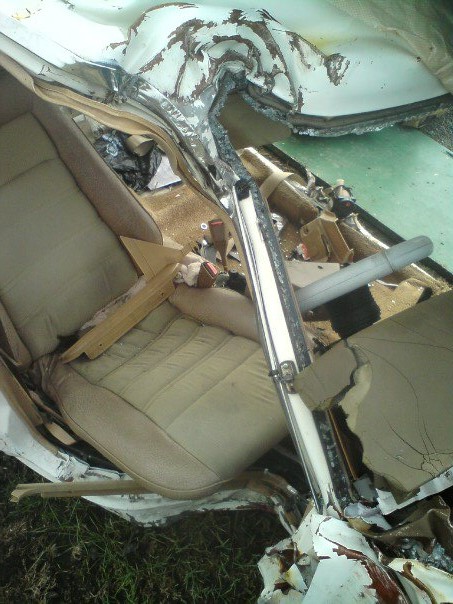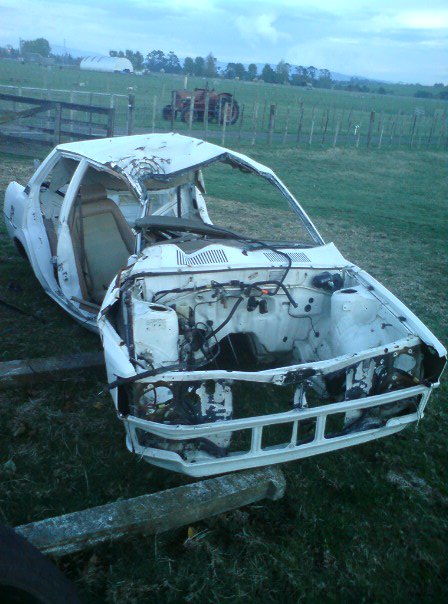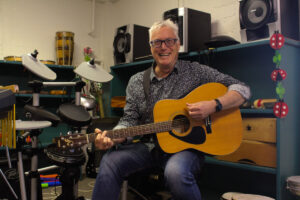Programmes aim to change attitudes of driving offenders
Youth worker John Finch designed two programmes aimed at driving offenders to help make New Zealand roads safer and statistics show they are working.
It was a Wednesday night in 2010 and a 24-year-old Morrinsville man was out drinking a few beers with some friends. At 11.30pm he decided to go home, so he grabbed his keys, headed out the door, and started the car. A close friend of his jumped into the passenger’s seat. The friend had had a lot to drink so he decided to drive him home. He says he felt okay to drive that night.
The man, who does not want to be named, was driving along the open road near Morrinsville when he approached a sharp corner. He slowed down but when he got around the corner he drove over unsealed gravel on the side of the road and lost control. The white Toyota Corolla DX was a write-off after it spun-out and crashed into a power pole.
The passenger walked away unharmed, but the driver was lucky to survive. Most of the impact was absorbed by his side of the car. He says he broke bones in his left arm and a bone in his right leg. The impact “smashed them completely into pieces”. He needed five operations. “I have a plate and nine screws in my right leg, just under my knee, and in my arm I have got two steel plates and 13 screws…they hold my arm together,” he says.


“I was in hospital for two weeks, I was in a wheel chair for four to five months, and then I was on rehab.” Recovery was slow at first, but he is glad it is over. The scars on his knee and arm remind him of that night. He says they ache sometimes when it is cold.
He was disqualified from driving for six months and was charged for driving under the influence of alcohol. He says although he had four beers that night, he does not completely blame alcohol for the accident. He says the loose gravel should not have been on the road, but “alcohol could have slowed my reactions, I suppose.”
Now 27, the man is an agricultural contractor, making a living from driving tractors. He has not driven under the influence since the accident. “I don’t risk it at all now, I just get rides, get dropped off, or stay at places.”
Youth worker John Finch knows all too well how driving under the influence of alcohol and drugs can affect people. He was working with disadvantaged youth at an alternative education and youth training centre in Manukau when the New Zealand Police asked for his help. They wanted help to educate young driving offenders about the consequences of their actions.
Finch spent about a year doing research to come up with the best way of teaching youth offenders. He says he asked young people what would make them stop committing driving offences. Their response was that television advertisements are not effective because they know the people on them are paid actors. Finch says talking to young people helped him come up with ideas that shaped a new programme to stop drivers offending.
He developed a programme called Right Track in 2007. The 42-hour programme runs over four weeks and targets young people, adults, and recidivist offenders within the justice system who have been caught committing driving offences. Driving offenders in the programme are usually referred when caught with excess breath alcohol, speeding, or driving carelessly or recklessly causing injury.
Waitemata Police Area Commander Inspector Gary Davey says he supports Right Track because he has seen the difference the programme has made in the attendees and the support people. “I have also seen the programme affect the attendee’s family and friends. It truly is a transformational programme.” Out of the 139 Right Track participants in 2010, 74 percent did not commit any driving offences for at least one year.
In the programme, which has operated throughout New Zealand, participants visit mock crash scenes and receive presentations from the Serious Crash Unit, funeral directors, and parents of killed teenagers. The range of activities, scenarios, and emotional presentations participants are exposed to create awareness and demonstrate the realities of driving impaired. Finch says it shows people first-hand the consequences of their actions.
He says people begin the programme with “huge attitudes”. He admits the most challenging part is about cutting through that. “It is about looking at attitudes towards impaired driving and how we can help people look at those attitudes and do something about them,” he says.
A documentary about Right Track that aired on Shine TV a couple of years ago revealed some of the scenarios the learners experienced. The documentary showed how shocked participants were to walk outside and see the staged aftermath of a fatal head-on crash.
When participants finish the course and attend the graduation ceremony, Finch says there is a moving display of how the programme has changed their attitudes. The participants have an interview at the end of the programme with a police officer to describe what they learnt and how they have changed. Finch says the police sometime wonder if they are talking to the same person.
“One of the key components of the programme is about choice, and it is about decisions. By being able to apply that logic to everyday-life, [participants can make] better choices and we see that in the way the person arrives at the end of the programme.”
Finch attributes the success of the programme to the range of learning styles and emotional triggers he accounts for, which ensure each participant learns something. “Every person in the course ‘gets it’ at some stage. We keep reinforcing it. It’s about saying the same thing in a million different ways.” He hopes the Right Track will eventually become a part of the licensing process.
With the success of Right Track, Finch started a second programme in Hamilton at the beginning of April called Repeat Impaired Drivers (RID). The initiative was designed to change the attitudes of repeat alcohol and drug-driving offenders.
“The Right Track is possibly the world’s most successful rehabilitative programme and what we are hoping to do with the RID programme is to emulate that success,” he says.
In 2011 there were seven fatal traffic crashes, 360 serious injury crashes, and 970 minor injury crashes caused by drivers under the influence of drugs or alcohol. This resulted in 85 deaths, 466 serious injuries, and 1,435 minor injuries.
Finch says the programme coined the phrase there is no such thing as an accident because people have always made decisions that lead to it. “People who drive impaired are a crash waiting to happen.
“These are not bad people. These are all really good people who made some pretty bad decisions,” he says.
He says the 16 participants started to embrace and engage with the programme after just four of 12 of the sessions. Finch says they were motivated and talked about how they were implementing what they were learning.
Finch would not go into too much detail about what participants do in the programme because he did not want to lessen the programme’s impact for future participants.
“Across the world we have lost sight of our responsibility towards educating people about what happens in vehicles,” he says.
According to Finch, the justice system needs programmes like RID because they offer an effective alternative to issuing fines, sending offenders to jail, or suspending their licence. He says judges refer people to the programmes because they know how effective they are. Judges know that if they use measures such as issuing fines, they are likely to see offenders reappear in court because they reoffended.
According to the Ministry of Transport, the average social cost for each fatal crash in New Zealand is estimated to be about $4.4 million, and almost $47,000 per serious crash. The social cost measures expenses caused from death and disability as well as medical, legal, court, and property damage costs.
The RID programme requires about $1700 of funding for each person, and Finch says it could potentially save the country a lot of money by preventing the highest-risk drivers.




